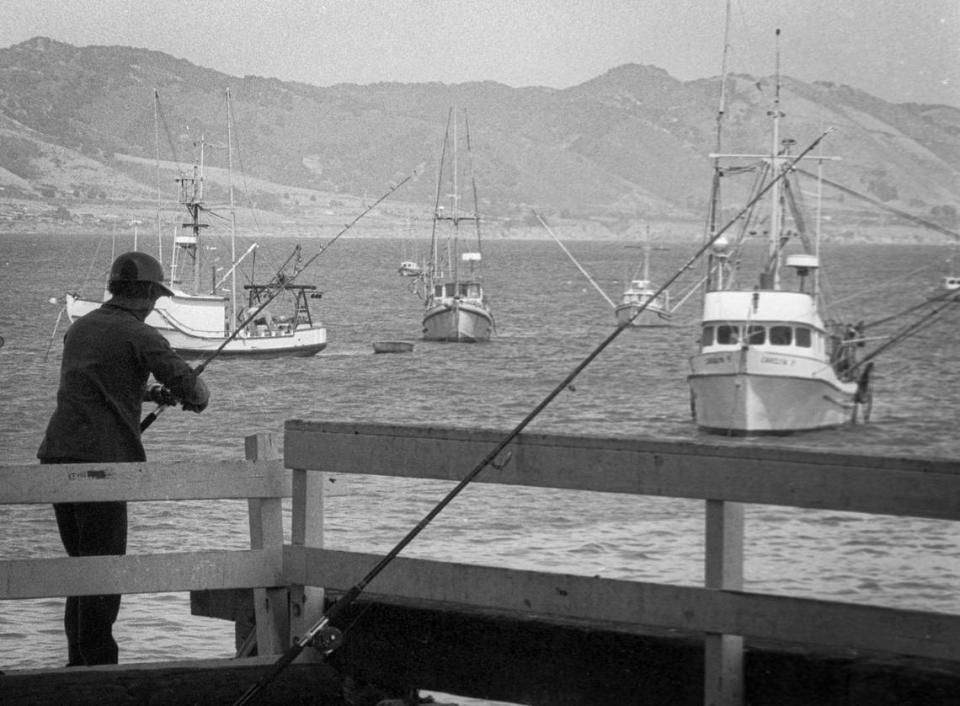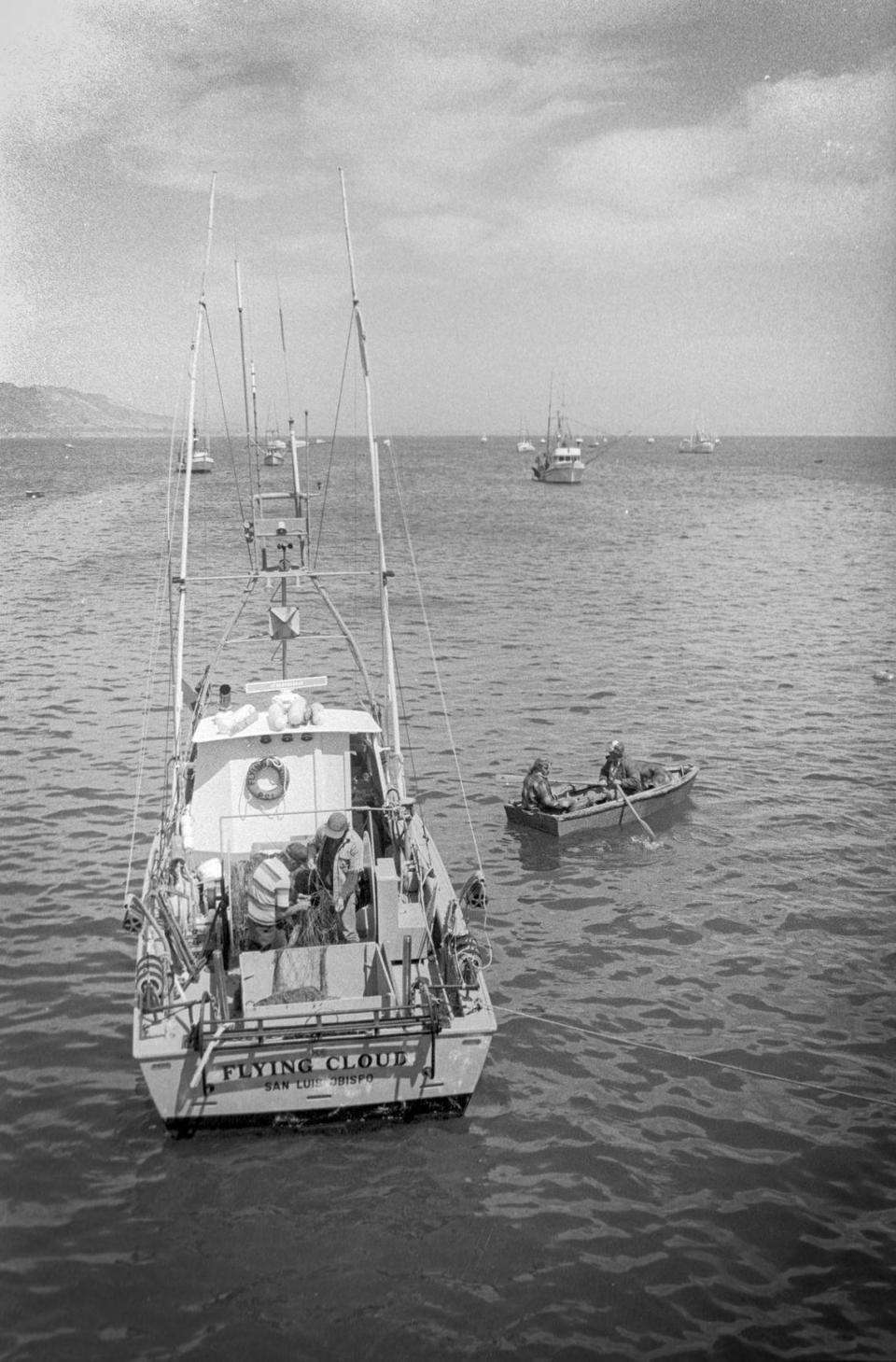SLO County could see a strong El Niño this winter. Here’s what one looked like in 1982
Fishermen off the coast of Peru in the 1800s observed a troubling phenomenon: Catch numbers would nosedive if warm water arrived around Christmastime.
Fish who fed best in cold upwelling waters along the coast abandoned the now-too-warm equatorial zone.
They called it El Niño — “the boy” in Spanish — referring to the birth of Christ.
Decades later, the oscillating pattern would be linked to changes in rainfall and other metrics.
The National Oceanic and Atmospheric Administration calls the pattern El Niño/Southern Oscillation or ENSO. The cycle tends to run in a 3 to 5 year loop, bookended by El Niño and the opposite condition, La Niña.
NOAA heralded the arrival of El Niño this summer and an updated reading of data in October forecast a 75-85% chance of it becoming a strong event.
Strong events in 1982 and 1997 were associated with heavy rainfall events in California. However, the 2015 event was not.
Will this year be a repeat wet year or dry like 2015? Stay tuned.
You might wonder: Where did those fish go when the ocean temperatures changed near Peru?
Some of them came here.
On June 28, 1983, Dan Stephens wrote about the trailing influence of a wet El Niño season that had brought wind, rain and storm damage to piers on the Central Coast.
After all, El Niño was still a novel phenomena in the early 1980s.

‘El Niño’ changes local fishing
Tropical fish are warming up to the chilly waters of the Central Coast.
Barracuda and bonito, usually found south of Baja, have made their way farther north this year because of warmer seas, according to scientists at the Scripps Institute of Oceanography in La Jolla.
Heating the water is a wacky tropical whirlwind called “El Niño,” which means “The Child,” after the feast of the Nativity, since the greatest effects usually occur around Christmas.
Spawned off the coast of Peru for unknown reasons, El Niño heats vast areas of ocean, causing dramatic changes in weather patterns and marine life.
“During a normal winter, tradewinds normally blow west toward Australia and the water stays cold. But during El Niño, winds blow toward the east, warming the seas,” said Chuck Colgan of Scripps.
He added El Niño is not an ocean current.
Rather, it is a strange atmospheric phenomenon which heats large areas of ocean as it moves up the coast from Peru.
On the Central Coast, long-time fisherman Ed Edwardson of Port San Luis, said barracuda and bonito, a type of mackerel, are in these waters following their feed, the red pelagic crab. Pelagic means open-water.
The crab in turn are following the warm water.

“The fish go in and out with their bait and their stay usually lasts eight of 12 months. It started in September and this year barracuda and bonito even got up as far as San Francisco because of El Niño,” Edwardson said.
This year El Niño, like a giant heat lamp, has heated one-third of the Pacific Ocean from Southern Chili to the Gulf of Alaska and west to the International Dateline.
And according to Colgan, the lobster-like crab have been found from Ensenada, Mexico, as far north as San Simeon because of the warming trend.
Lawrence “Bud” Laurent, a marine biologist with the Department of Fish and Game, said he isn’t sure if the warmer temperatures on the Central Coast are due to El Niño. But he does acknowledge the temperature changes.
“Temperatures now are in the mid-50s here. Normal water temperature for June, which is the coldest time of year, is the upper 40s,” he said.
Laurent said the warming trend exists because of a lack of something called upwelling, which could be caused by El Niño.
“Upwelling is when the colder waters come up to the surface which aisd in the process of photosynthesis,” Laurent explained.
“When upwelling is strong, the nutrients are rich,” Laurent said.
And since upwelling is weak, temperatures are warmer.
Such drastic change in temperature could have dramatic effects on the food chain, from plankton on one end to commercial fishermen on the other.
“Many species are narrowly tolerant, especially pelagic (open water) fish like the barracuda and bonito,” Laurent explained.
In Morro Bay, a spokesman for Virg’s Landing, a fishing charter, said one spot recently just offshore was 65 degrees. He said bonito were being caught right off the Morro Rock.
Colgan agreed with Laurent that El Niño could have far-reaching effects on both marine life and man.
El Niño historically has had an averse impact on the Peruvian anchovy fisheries, which is a major source of the world’s fish meal production, used mainly for livestock and chicken feed.
A 1972 El Niño resulted in the reduction of these fisheries to less than half the 1968-70 level. This spurred an increase in the production of soybeans and some synthetic protein materials and doubled the price of chicken in one year.
Another significant effect of El Niño could be the loss of kelp forests, Colgan said.
He explained that when warm water destroys the plant’s nutrients and kelp dies, help dwelling fish lose their habitat.
Despite the overwhelming effects of this fickle weather system, Colgan said no one really knows what causes it.
The last major El Niño event of this size was in 1957-58 and lasted more than a year. Scientists will be tracking the current El Niño to see if it diminishes this summer.

